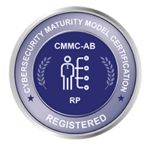1. Ensure end-point devices are included in your compliance initiatives.
Compliance initiatives for data security such as HIPAA, PCI DSS, GDPR, FISMA state that you must include all event logs from all IT assets, big and small into your SIEM systems. Having event logs from endpoint devices alongside servers, desktops and other IT assets in your SIEM provides evidence of security measures in place for all data.
2. Implement containerization with military-grade encryption for data at rest on the device and data in transit to and from your network.
Containerization will provide an extra layer of security at the network endpoint. With a secure and containerized partition on the device, personal applications are segmented from the applications and data that are being targeted by cyber thieves. If you have NIST-certified (National Institute of Standards and Technology) AES encryption on the container, the data is secured at rest on the device and in transit across your network.
3. Correlate your mobile event log data alongside your other IT asset log data.
Get the true picture of user activity across your network. If your BYOD policy includes containerization with event log data fed to your SIEM, you can begin to monitor user activity at the far reaches of your perimeter and help uncover anomalous behavior across BYOD or within your perimeter that is linked to cyber threat.
4. Have a BYOD policy to stand by and educate your employees on the dangers of BYOD.
EMM systems were never originally designed as security and anti-virus systems. A containerizedapplication workspace provides a secure data platform at the device level that encrypts and transports data between your enterprise’s back-end and a secure, “sandboxed” application container on your employee’s mobile devices. This complement to your EMM, provides addedsecurity and another layer of difficulty for a hacker to get through to get to your data andcorporate IP should the device be lost, stolen or compromised.
5. Fortify your BYOD policies at the device level.
EMM systems were never originally designed as security and anti-virus systems. A containerized application workspace provides a secure data platform at the device level that encrypts and transports data between your enterprise’s back-end and a secure, “sandboxed” application container on your employee’s mobile devices. This complement to your EMM, provides added security and another layer of difficulty for a hacker to get through to get to your data and corporate IP should the device be lost, stolen or compromised.

